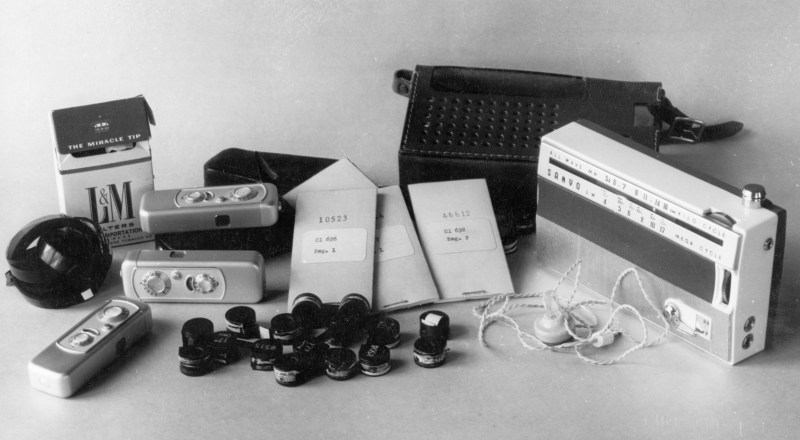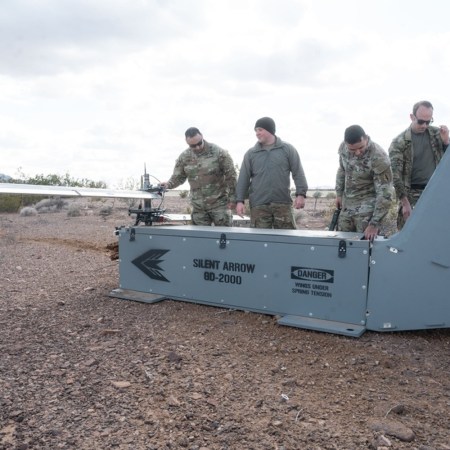Gathered in a London hotel room in 1961, American and British spies were sitting on a gold mine: a top Soviet military intelligence officer who, being disillusioned with the Kremlin and the Soviet system, wanted to tell them whatever they wanted to know about his homeland and its most closely held secrets.
Oleg Penkovsky, then a colonel in Russia’s military intelligence service known as the GRU, had already passed along intelligence about the shoot-down of American satellite planes in Soviet territory and information on his own GRU graduating class. He was the real deal.

Months after that first contact, Penkovsky and his Western handlers had arranged a series of meetings while Penkovsky on his own Soviet-approved secret mission to London, where he went undercover as a trade delegate.
There was only one problem: Penkovsky also wanted to execute a near Dr. Evil-level crazy plan, and he wanted America’s help.
“One of the most difficult meetings occurred at the beginning of the series [of meetings], when Penkovsky presented his plan for taking Moscow, and the Soviet leadership, hostage,” says a declassified CIA history written by Leonard McCoy, a CIA officer apparently directly involved. “He proposed deploying 29 small nuclear weapons in random fashion throughout Moscow in suitcases or garbage cans. We were to provide him the weapons, instruct him in welding them into the bottoms of standard Moscow garbage cans, and provide him with a detonator to be activated at our discretion.”
The American and British intelligence officers probably wanted to throw Penkovsky out right then, but he was far too valuable of a source not to at least humor with patience.
“Only with difficulty was Penkovsky persuaded that such a plan was impractical. The low state-of-the-art in nuclear-weapon miniaturization was the key to Penkovsky’s eventual acceptance of our lack of enthusiasm,” the history says. (The U.S. did develop some disconcertingly small nuclear weapons throughout the Cold War, however.)
Penkovsky’s next request was less dangerous, if way weirder.
“A more troublesome, and time-consuming, requirement which was at least as important for the long-term success of the [recruitment] operation was the voluminous list of personal requests which Penkovsky had brought with him,” the study says. “Among these items were several pairs of shoes, each request accompanied by a drawing of the feet of the lady requiring the shoes.”
The British intelligence service, MI-6, eventually simply assigned an officer to Penkovsky’s bizarre shopping list.
“Had the KGB focused on the huge collection of items which Penkovsky took back to Moscow with him, there would have been questions as to when he had time to make the purchases and where he got the money. We [the CIA] split this cost with MI-6,” the study says.
For his idiosyncrasies, Penkovsky proved to be an invaluable source of intelligence. In early May 1961 Penkovsky returned to Moscow from his whirlwind London assignment, where he kept up his contacts with British and American intelligence. There, one of the ways he passed information back was to meet with the wife of a British intelligence officer who often took her children to the park. Penkovsky would give the woman a small box of candy for the kids and inside would be a very small camera with film to develop.
As part of the intelligence haul, Penkovsky provided technical details about missile launch sites in Cuba that the CIA credits with helping then-President John F. Kennedy beat the Soviets during the Cuban Missile Crisis and “altering the course of the Cold War.”
Penkovsky’s production of intelligence was “voluminous” – approximately 10,000 pages-worth in the end — but every photograph, every communication and every meeting added to the dangers he faced. Eventually, Penkovsky’s luck ran out.
After identifying him as a potential traitor, the CIA history says that in the fall of 1962 KGB drugged Penkovsky while he was out at a restaurant, so they could search his apartment while he was in the hospital. Eventually investigators discovered Penkovsky’s hidden cameras, cassettes and encrypted messages.
“After his arrest, a plan was proposed to rescue Penkovsky, using the threat of exposing certain sensitive information which could definitely have embarrassed the Soviet leadership enough to cause them to consider releasing Penkovsky,” the CIA history says. “This proposal was circulated throughout the management level of the Clandestine Service without any one placing a mark on it. It returned to the originator’s desk in pristine condition, with oral word that the proposal had been disapproved.”
The CIA says it’s unclear to this day exactly what did Penkovsky in, but after a public trial in May 1963 he was sentenced to death and executed in Moscow’s infamous Lubyanka prison.
Though Penkovsky had done so much to convince McCoy, the CIA officer, that the Soviet Union often lied about what it had done, McCoy said that when Penkovsky’s execution was reported, he believed that.
“There is little probability that Penkovsky survived beyond the date of his reported execution,” he wrote. “The damage he caused was too great…”
This article was featured in the InsideHook newsletter. Sign up now.






















